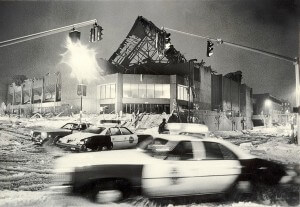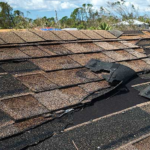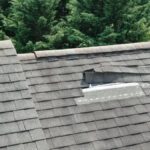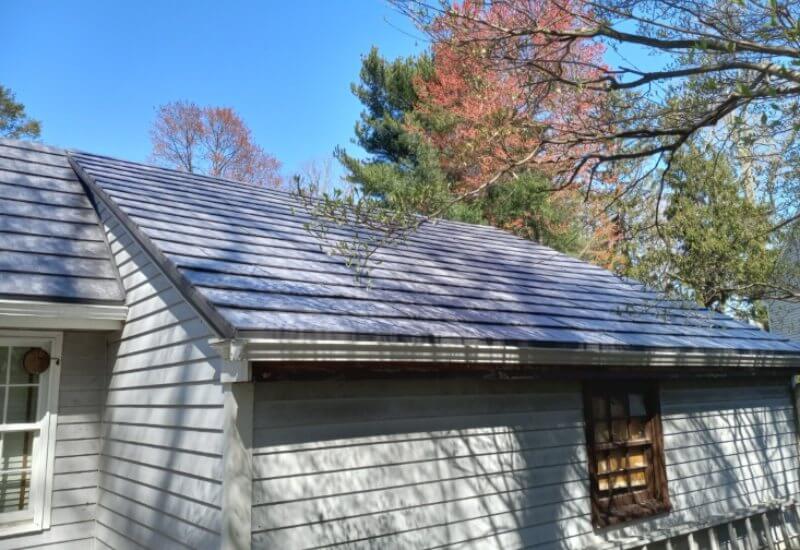Hartford Civic Center Not The Only Roof Damaged by Snow in 1978
March 7, 2014 | By Mike Gonet | Filed under: Articles, Education, General, Metal Roofing
Snow Roof Damage a Common Occurrence, But Often Preventable
 The winter season in New England is notorious for its dreadful snow storms. Looking back, on January 18, 1978, when a prominent 10-day long storm hit Hartford, Connecticut, the Civic Center roof tumbled down to pieces due to the excessive weight of accumulated ice and snow. This disastrous collapse happened only about six hours after U Conn and U Mass had competed against each other within the arena. It is truly a miracle that this happened overnight when no one was inside the center. During this 10-day storm, the roof of the Hartford Civic Center was not the only roof damaged in New England. Buildings in the surrounding areas also experienced damage, to varying degrees, as buildings do every winter – from the accumulated effects of heavy snow loads, ice dams as a result of melting and refreezing, and so on.
The winter season in New England is notorious for its dreadful snow storms. Looking back, on January 18, 1978, when a prominent 10-day long storm hit Hartford, Connecticut, the Civic Center roof tumbled down to pieces due to the excessive weight of accumulated ice and snow. This disastrous collapse happened only about six hours after U Conn and U Mass had competed against each other within the arena. It is truly a miracle that this happened overnight when no one was inside the center. During this 10-day storm, the roof of the Hartford Civic Center was not the only roof damaged in New England. Buildings in the surrounding areas also experienced damage, to varying degrees, as buildings do every winter – from the accumulated effects of heavy snow loads, ice dams as a result of melting and refreezing, and so on.
People have the notion that snow and ice damage on their roof and home is inevitable. This misconception is widespread. Snow roof damage is actually completely preventable. However, it is such a common occurrence that homeowners do not take the correct measures to protect themselves, their family, and their home. Ever see icicles dangling around the edge of your roof? As pleasant to the eyes as they may be, this is a major warning that you may in fact have an ice dam on the roof, preventing the roof to properly drain water.
Ice dams are not an issue to be taken lightly. Why do they happen? If there is poor ventilation, the warmer air in the attic will melt the snow on the roof. This is bad because melting snow will cause the liquid to get underneath the roofing shingles and under lower areas before it becomes frozen again by the cold weather. This water has the potential to get underneath the roofing shingles and leak into the house, which would damage the ceilings, walls, etc. Not only is all of this water leaking into the house, it also brings the possibility of mold growth, rotting and damaging the roof deck and making the air inside the home unhealthy.
How is this prevented? There are immediate short term and long term adjustments that can be made to the roof to prevent this issue. The most immediate and dangerous step is to carefully step up on the roof and use a roof rake, which can be purchased at most home improvement retailers, to push the built up snow off the roof immediately after the storm. The amount of built up snow that a roof can handle is going to differ based on the type of roof and condition; however, the general rule is that there should be no more of a foot of heavy snow on the roof before it is removed. Once the snow is removed, find the location of any ice dams. Once located, chip at the ice carefully and try not to do any damage to the roof. Let it create a stream in a direction where it will flow off the roof easily. Finish by clearing any ice out of the gutter. Spread calcium chloride to aid the ice in melting; however, do not ever use rock salt, as this will damage the roof. Though this is completely doable for most people, getting up on the roof after a storm is very dangerous. Consider hiring an experienced roofing contractor to do this for you.
The most efficient long term method of prevention would be replacing your problematic roof with a metal roof. Besides all of the other great benefits of metal roofing, the metal roof has a smooth surface and a radiant reflecting property that gives it many heat handling characteristics to battle ice damming. A lot of metal roofs have an interlocking system, which also makes it much more difficult for water to get in. When replacing the roof, be sure an ice and water shield-type membrane is being installed. This shield will not protect the roof, but it will protect the house from water leaking in. Proper ventilation and insulation is also vital. The attic should be the same temperature as outside so the warmer air in the attic will not be melting the snow on the roof, as explained earlier. Speak with a metal roofing contractor today and determine which metal roofing product meets your criteria.





